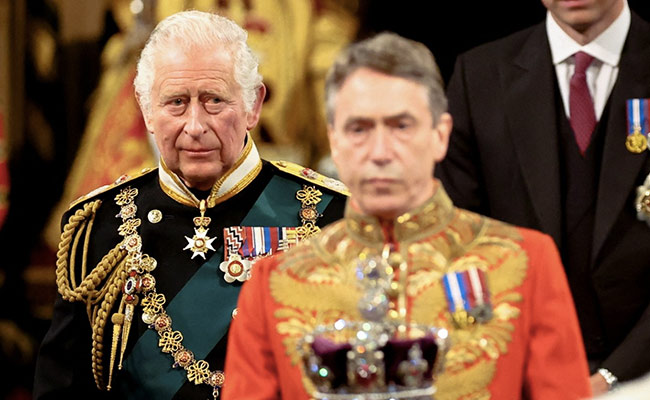While Charles automatically became the king when his mother Queen Elizabeth II died, the coronation would not come until later because this deep symbolic ceremony needed time to organize.
The coronation of a British ruler was full of rituals since centuries ago.
The coronation of Elizabeth II in 1953 came more than a year after he became the queen after the death of his father George VI.
This is what is expected to be an offer of British farewell to a king, and welcome others:
Period of mourning
The coronation was separate from the accession council, who gathered at the St James Palace immediately after the death of a king to officially declare the successor accession to the throne.
During the council, the king swore the holy oath for “the spiritual and temporal rulers of this domain”, stated their Protestant faith, tried to maintain the Protestant succession, and promised to protect the Scottish Church.
Preparation for 10 days of mourning official will begin, while coffin, covered with royal standards, is located in the Balmoral Castle for staff to pay respect.
This will then travel from Balmoral to Edinburgh to lie down in the throne room at the Holyroodhouse palace in the Capital of Scotland, before being taken to London by royal train.
The funeral of the queen will take place in Westminster Abbey, becoming the first King of England to have his funeral in a famous church since 1760.
Coronation ceremony
The ceremony took place at Westminster Abbey and was served by the Archbishop of Canterbury, the religious leader of the Anglican Church.
The Archbishop introduced the new authorities to the audience, who clapped, before the Sovereign then announced the coronation.
In the oath, written in 1688, the King really sworn to rule the British people according to the laws certified in the parlemen, to uphold the law and justice “with the sake of punishment”, and to “do everything possible” for Preserving the Anglican Church and Protestant “Protestant Religion.
The Great Bishop then adopted a leader with the oil, and blessed them in the throne of King Edward, made in 1300 and has been used in every removal since 1626.
Sovereign finally accepted its government ornaments, including government sticks and crowns, which were carried out by the Great Uskup.
Coronation of the wife
Unless it is stated differently, and if the new ruler is a man, his wife is declared as a queen and is crowned, following a similar but simplified ceremony.
She will be the queen of widows (or queen’s mother if the previous widow queen is still alive) about the death of the king, which will be replaced by her first child, regardless of the sex.
Queen Elizabeth II, in one of the last actions that decisive for succession, resolve questions that have been running for a long time about what will be called by Charles’s wife, Camilla,.
It has been intended that he will become a “princess consort”, because he is not the first wife of the new king, and also because he respects Diana, the Princess of Wales, who was killed in a 1997 car accident.
But the queen said he gave him a blessing for Camilla to become “Consort Ratu”.
The Crown Jewels
Britain still uses regalia – costumes and ornaments like royal sticks and swords – at the coronation ceremony.
Mahkota St. Edward, made in 1661 for the coronation of Charles II, was traditionally used during the ceremony.
Made of gold, silver, rubi and sapphire, weighing more than two kilograms (more than four pounds) and placed in the king’s head at the time of the actual crown.
Lighter crown is used when leaving a monastery. Consisting of 2,868 diamonds, made in 1937 for the coronation of George VI and was also imposed by the authorities at the annual opening of parliament.
Guests
In 1953, 8,251 guests from 181 countries and regions participated in the coronation of Elizabeth II.
Among them there are many representatives from foreign monarchy but there is no European sovereignty, respecting the royal tradition.
After the ceremony, the long procession took place on the streets of London.
Although Westminster Abbey and Buckingham Palace are less than one mile (1.6 kilometers) separate, the procession route stretches 7.2 kilometers in 1953 to allow as many people as possible to attend.

